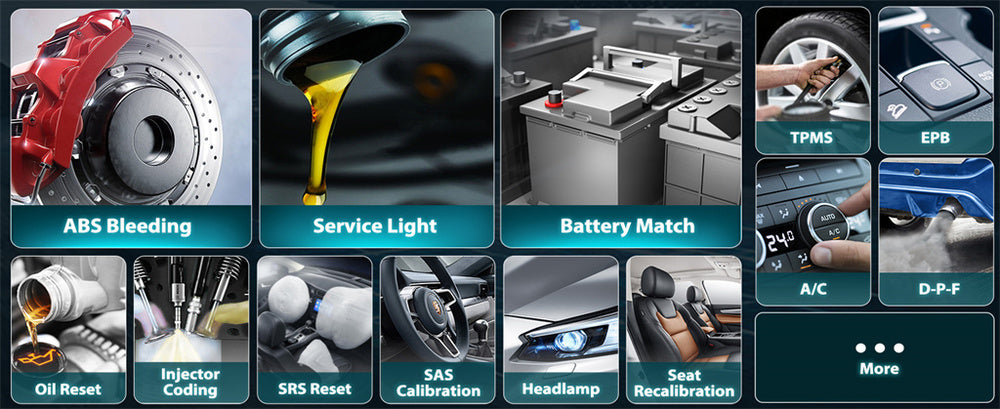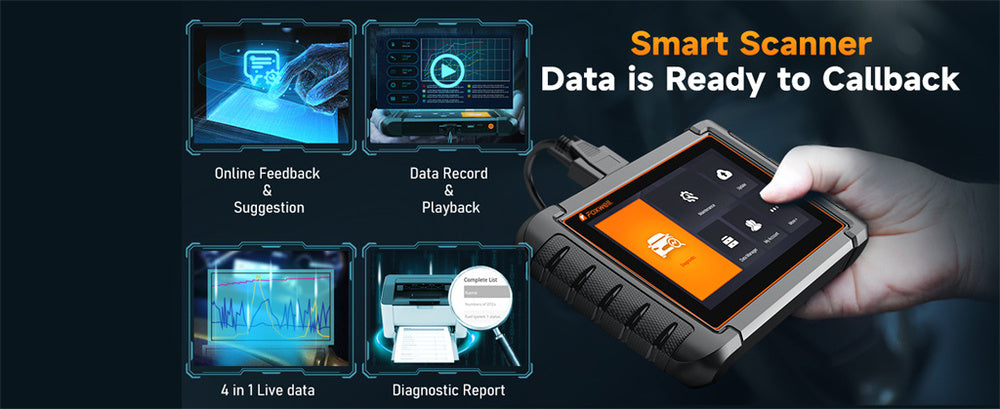Attentive vehicle ownership requires being proactive about potential problems, with one of the key areas being battery monitoring.
A weak or failing battery could leave you stranded at an unexpected moment; with an OBD reader, you can easily monitor its health and detect issues before they become serious.
No matter whether you are an avid car enthusiast or simply want to avoid surprises on the road, knowing how to use an OBD reader to test your battery could save both time and money as well as headaches!
Can an OBD Reader Determine Battery Health?

Let's cut to the chase: you might be asking, "Can my OBD reader really check my car's battery health?" While technically true, using an OBD reader as a measuring stick might only provide partial insight.
Like using a thermometer to identify fever symptoms - an OBD reader gives an initial snapshot but may not always provide complete picture.
Most OBD readers offer basic voltage readings. If the reading is too low, your battery may be struggling; healthy batteries should show between 12.6 volts when your car is off and 13.7 to 14.7 when running - any number outside these parameters indicates something could be amiss with your battery's health.
If an OBD reader reveals numbers that deviate significantly from these thresholds it could indicate trouble ahead.
But here's the thing: not all OBD readers are created equal. Some are like simple thermometers. They give you basic information. More advanced ones provide greater details.
These advanced OBD readers can reveal battery charge status. They also show cranking voltage.
Plus, they tell you how efficiently your battery is being charged while the engine is running.
Investing in one of these advanced models is important.
It’s a smart step toward keeping an eye on your battery's health. If battery management is important to you, consider getting one of these models.
Are You Wondering How to Use an OBD Reader to Assess Battery Health
Have you decided to utilize an OBD reader in order to assess your car's battery health?
Here I will demonstrate how this can be accomplished using the Foxwell NT809BT, an advanced Bluetooth-enabled OBD reader that offers advanced diagnostics direct from your smartphone or tablet device.
Here's how the Foxwell NT809BT can help keep an eye on your battery:
Locate and Plug in Your Device:
- Step one: It is to find your car's OBD-II port; it can usually be found beneath the dashboard on the driver's side.
- Step two: Take out your Foxwell NT809BT device and plug it directly into its port - no need for recharging! This device will use power directly from your car, so there will be no hassles with charging beforehand!
Connect via Bluetooth: TheFoxwell NT809BT connects seamlessly with mobile devices via Bluetooth connectivity, simply enable Bluetooth on your phone or tablet, launch the Foxwell app, and pair with the scanner.
This set-up makes viewing detailed data much more comfortable than peering at small displays on small devices.
Once connected, navigate to the battery health section in the app. The Foxwell NT809BT does more than display voltage readings; it offers a comprehensive diagnostic report covering current charge status, cranking voltage, and even how efficiently your engine is charging the battery while driving.
Interpret the Data: For optimal battery health, an ideal range is 12.6 to 14.7 volts when engine off and 13.7-14.7 when running.
However, with the Foxwell NT809BT's analysis feature, any irregularities or faults that may lead to future issues are quickly highlighted by alerts given by its scanner, allowing you to address them before they become an even greater concern.
Save and Share Reports: The app makes it easy to store diagnostic reports, making them ideal for monitoring battery performance over time or sharing it with mechanics. Imagine having an electronic health record for your car's battery right in your phone!
Foxwell NT809BT is like carrying around an entire diagnostic lab in your pocket! Easy and hassle-free operation thanks to Bluetooth makes this an invaluable asset, whether you are car enthusiast or simply someone wanting to avoid being left stranded with dead battery issues. This tool has your needs covered!
Tips for Checking Battery Health with an OBD Reader
An OBD reader can be an invaluable asset when it comes to maintaining the health of your car's battery. Here are a few practical strategies for getting the most from using one:
Start With A Full Charge
Before running OBD diagnostics on your battery, ensure it's fully charged. Insufficient charging may produce inaccurate readings that make it appear like there's an issue when there really is none.
If in doubt, take your car for a short drive first so as to give the battery an extra boost and run diagnostics again later.
Check Battery Voltage
To begin your battery test, the first thing to keep an eye on should be its voltage. Generally speaking, healthy car batteries should read between 12.6 volts when off, and 13.7 to 14.7 when running - however if your OBD reader shows anything lower or higher than these ranges then further investigation might be warranted for both your battery or charging system.
Check the Cranking Voltage
One key indicator of battery health is how well it performs under load, such as when starting up your car.
A quality OBD reader such as Foxwell NT809BT can measure cranking voltage; if this drops below 9.6V when starting up your car it could signal that its health may have declined and requires replacement soon.
Assess Charging Performance
It's not only your battery that matters when it comes to its health; the charging system plays an integral part as well.
Use an OBD reader to monitor how efficiently the alternator is charging the battery when your engine is running; an ideal charging voltage should range between 13.7-14.7 V.
If its fluctuations exceed this range or go below 13.7V there could be an issue in its components, or something may need adjusting further in its system.
Monitor Battery Temperature
Some advanced OBD readers can also give you information on the temperature of your battery. High temperatures could indicate it is overworking or not cooling properly, shortening its lifespan and decreasing performance.
If your OBD reader displays consistently high battery temperatures, check if there's an underlying issue such as an underperforming alternator or poor ventilation that needs attention.
Save and Compare Data
If your OBD reader allows for you to save data, take full advantage of it. Regularly monitoring and comparing your battery health can help identify trends before they become major problems - for instance if the voltage gradually decreases over several checks it could indicate it's nearing its end of life cycle.
Pay Attention to OBD Reader Alerts
Finally, trust in the alerts and warnings generated by an OBD reader. If something odd appears on its readings, even if your car appears to be running fine, don't ignore them; sooner rather than later is when battery issues can be best managed (and repaired more cost-effectively).
Adopting these techniques, your OBD reader can effectively help monitor and maintain the battery health of your vehicle ensuring it will always be ready when you need it.

Conclusion
Utilizing an OBD reader to monitor your car's battery health is one of the smartest steps you can take towards keeping your vehicle in great shape.
From basic models like the Foxwell NT809BT to more sophisticated tools, OBD readers provide invaluable information that could prevent unexpected breakdowns or costly repairs down the line.
By regularly monitoring its condition and following our tips provided, an OBD reader could extend battery life, ensuring you're always ready for action when it comes time to hit the road!
If you haven't started yet, now would be an ideal opportunity to take charge of its health before it's too late!
FAQs
How can you check if a battery is still good?
Use an OBD reader to measure the voltage. A healthy battery should show 12.6 volts when off and 13.7 to 14.7 volts when running.
What is the app that checks car battery health?
The FOXWELL app, used with the FOXWELL NT809BT, checks car battery health, including voltage and charge status.
How do I check my battery health DIY?
Plug an OBD reader into your car, connect it to an app, and check the battery voltage and health status through the app.




Leave a comment
This site is protected by hCaptcha and the hCaptcha Privacy Policy and Terms of Service apply.